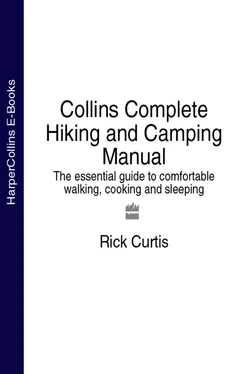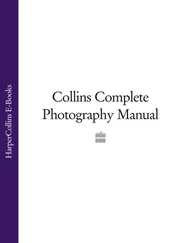How will weather affect trip activities? How might it affect the safety of the group?
Will altitude changes during the trip have an impact on weather or temperature?
EXPECT THE UNEXPECTED
When planning a trip, remember that the ultimate goal is for people to have fun. Here are some tips to planning a trip that everyone can enjoy:
Make a plan that can be modified during the trip. All sorts of factors—bad weather, changing trail conditions, broken equipment, ill-prepared participants, an injury—may require you to change your itinerary.
Don’t plan long or difficult hikes on every day of the trip. Vary the mileage so that you have some days when you can get a later start or get to camp early.
On longer trips, schedule a rest day every five to seven days.
Make sure that people have some time during each day to kick back—to read, watch the sunset, write, etc.
When hiking at high altitudes, people acclimatize at different rates. You may have to adjust your trip to give people time to properly acclimatize before going higher, especially if people are coming straight from sea level to a high altitude. (See “ Altitude Illnesses,”.)
EQUIPMENT
Once you have determined your trip activities and location, you need to put together an equipment list. Sample equipment lists are provided in the Appendix, but remember that they should be used only as guidelines. Each trip and each person may have special requirements.
FOOD
It is important to have food that is both nourishing and edible. On longer trips, with specialized activities, or in different climates (e.g., cold-weather trips), it may be necessary to plan a menu that supplies a specific number of calories per day and stresses certain food groups over others. On any trip, it is essential to be aware of special dietary requirements for each trip member—food allergies, vegetarians, and kosher eaters—and plan a menu accordingly. Check this information on the Fitness and Health Information Form for each person on the trip (see page). For food, nutrition, and menu planning guidelines, See “ Cooking and Nutrition.”
COSTS
Before going on a group trip, talk about how costs will be distributed. This includes food, fuel, travel expenses, and first aid supplies. You’d be surprised how friendships can get strained because people did not work out the finances beforehand.
SKILL DEVELOPMENT
Depending on the type of group you’re traveling with, people may have varying levels of experience. There are specific skills that people need before the trip, such as how to pack a pack, and some that need to be taught on the trip, such as how to set up camp or how to use a backpacking stove. There are so many different skills I use on a hiking trip that I find it hard to remember them all—many I just do automatically. Take the time to make a list of these skills so you don’t overlook anything (a sample Teaching Plan is included in the Appendix). If you are a trip leader, or if you’re just traveling with friends who are less experienced, plan time to cover the important subjects both ahead of time and on the trail.
For advanced-level trips, you may need to do a more formal skill assessment. For example, if you are going to be traveling across glaciers, does everyone have experience traveling on snow, handling an ice axe, and being roped up? Will people need to know special techniques like self-arrest or crevasse rescue? Sometimes this assessment is done by reviewing people’s previous trip experiences, or you may have the group go out on a supervised practice trip to review and test special skills.
TRIP PREPARATION CHECKLIST
Use this checklist to help organize all the tasks that need to be accomplished before, during, and after your trip. If you are going on an extended expedition, expand the list and establish specific timelines for each task. For example, trips to remote areas might require you to apply months or even years in advance for a permit.
PRE-TRIP
This is a general list of things to accomplish before the trip, in a loose chronological order.
Contact participants and arrange meetings to talk about the trip (activities, experience level, individual and group goals, etc.).
Make lists of necessary personal equipment and group equipment, based on trip activities, location, and weather.
Identify potential hazards: environmental, equipment, and human. (See “ How Accidents Happen,”.)
Have all participants fill out a Fitness and Health Information Form ( page).
If appropriate, have people turn in a trip résumé to gauge their experience.
Evaluate the physical ability of each participant and develop a route appropriate for all members of the group.
In planning the route, consider transportation time, hours of daylight, time needed to set up camp, teaching time, rest days needed, changes in elevation, and other factors.
Make arrangements for any permits needed.
Develop a menu based on personal preferences and special dietary needs.
Assemble the group equipment and first aid kit.
Purchase and repackage the food.
Meet to distribute the group equipment and food for final packing.
Put together a trip packet with cash, credit cards, vehicle keys, maps, emergency numbers, travel directions, and the like.
Designate an emergency contact (someone who is not going on the trip) and give that person your Trip Logistics Planand Trip Safety Plan, showing your planned starting and ending points, daily route, campsites, and return time, along with the appropriate emergency numbers and instructions about who to call if you are overdue.
Contact area rangers for last-minute trail information.
Check the weather.
DURING THE TRIP
Keep track of all expenses on a Trip Expenses Form ( page).
Fill out your Trip Log ( page) as you hike so you have detailed information on hiking times, campsite locations, and water availability for future trips.
Document any close calls, accidents, or first aid treatments. These should be reviewed after the trip. (See “ Safety and Emergency Procedures.”)
ON YOUR RETURN
Notify your emergency contact person as soon as you return, and let him or her know you have returned safely.
Return any borrowed personal or group equipment.
Clean all gear. Water bottles and water containers should be treated with iodine or chlorine bleach solution if they have contained potentially contaminated water. (See “ Water Purification,”.)
Dispose of rubbish and properly dispose of human waste if you packed it out. (See “ Leave No Trace Hiking and Camping.”)
Dispose of any medical waste properly (see page).
Settle up finances.
It’s good to talk about the trip afterwards and see how well it met the goals you set out as a group and each individual’s goals. Are there things that you’d do differently next time? Identify and discuss any problems on the trip, including close calls or accidents. (See “ Safety and Emergency Procedures,” and “ Outdoor Leadership.”)
ROUTE DIFFICULTY
Whoever decides to plan the route should first determine the physical condition of the people going, which can be difficult. It’s best to rely on some form of objective measurement rather than counting on the “Yeah, I’m in great shape” reply. After reviewing thousands of health and fitness forms from college students I’m still amazed how often people either overestimate or underestimate their physical fitness level. Assessing physical fitness ranges from asking some basic questions about health and exercise activities to administering a required physical exam. Base your degree of assessment on the level of difficulty for the trip: If the trip is of low to moderate difficulty, staying relatively close to civilization, then you’ll have greater resources to fall back on in case of a problem. If the trip is more difficult or ventures into a remote location with limited access for evacuation or medical care, you need to do a much more thorough screening. In some cases, you may even require a specific conditioning regimen. Part of making sure that a person is going on the right trip is giving the individual as detailed information as possible about what the trip will entail. Having someone attempt a trip that is too physically demanding can lead to friction within the group as well as real safety issues.
Читать дальше












